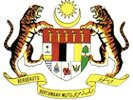Choose one!.

The Semelai have retained much of their old way of life despite having settled down in villages. At a three-day campsite adventure, ZALINA MOHD SOM spends treasured moments in their world.
FOR me, Tasik Bera will always bring back memories of a thrilling boat ride on my first trip there four years ago.
“It was better than a ride in a theme park,” I enthusiastically told photographer Munira Abd Ghani who came along on this trip.
All through the three-hour drive from Kuala Lumpur, I couldn’t stop talking about the ride – how fast the boat went through the narrow, snaking waterways and how sharp the corners were.
My enthusiasm was most infectious and soon our group, making the trip for a three-day/two-night camping adventure at Kampung Pathir camp, was bubbling over with anticipation.
Our trip was organised by the Semelai Association of Boat and Tourism (Sabot) with the co-operation of Wetlands International Asia-Pacific.
The Boat Ride
It was the dry season. The water level of the lake had dropped significantly. The thrilling boat ride we had hoped for turned instead into a wonderful, scenic cruise as we broke the still surface of the water and brushed against thick pandanus foliage.
That gave us opportunities to take a closer look at Tasik Bera’s rich flora and fauna. Munira, especially, had a good time clicking away, taking close-up shots of numerous species of pitcher plants, lotus, wild blooms and insects and birds from different angles.
We also stopped at a couple of crocodile hot spots while our Semelai host teased us with tales of crocodiles and giant anaconda-like snakes.
Jungle challenges
The land around the natural freshwater lake is generally covered by dry lowland dipterocarp forests. But the sight of a bare hill in front of our campsite shocked us. The trees had been stripped off — the work of loggers, perhaps.
Predictably, the start of our jungle adventure was a long, hot walk through rubber estates and naked red-earth plots. But it became cooler as we stepped into the Semelai Medicinal Garden – an area of the jungle with lots of medicinal herbs. Some bore information signages and the rare, “endangered” ones were protected within small fences.
Before we entered the jungle to see the endemic purple water trumpet or locally known as hati-hati paya, we had a little fun in the wild.
Our host threw us a challenge called Jejak Kelawar or trekking the bat where we had to walk through the shrub blindfolded, guided only by a rope. The game is usually part of the team-building, motivational programmes for student groups.
We then trekked (or may I say walked blindly) for about an hour to the spot where the water trumpet can be found. It was just a tiny stream where the leaves of the purple-greenish plant lie submerged.
The jungle trail was rather flat and easy – wide, clear paths with no challenging terrain except for a few wet patches. Besides the water trumpet, we saw some species of pitcher plants, jungle blooms and feline footprints.
That very night, we were left by ourselves – solitary in the jungle for about 20 minutes — as part of what is called solo night activity. The bright full moon did nothing to calm our quick pulsating hearts. The slightest sounds were amplified a thousandfold and we heard doom in every rustle of the foliage.
At The Camp
We didn’t exactly camp in the jungle. Instead, the Kampung Pathir Campsite is located on the fringes of a rubber estate, an open area designated perhaps for rubber cultivation and a thin line of forest that acted as a buffer-zone between the lake and the kampung.
The small kampung nearest to our campsite was about 300 metres uphill. Nevertheless, it gave us a taste of how the Semelai lived.
There were three units of traditional Semelai houses, with walls made of tree bark, a bamboo floor and an attap roof. It was comforting for us to find out that we had at least two common bathrooms and toilets for both genders and a multipurpose hall that served as kitchen, dining area and classroom. Water was frequently pumped in from a “faraway” well and electricity came from a generator.
Lifestyle of the Semelai
For three days, we would share the ways of the Semelai. We slept in their balai, we tasted their food, learned their hunting skills, tried our hands at their crafts and danced to their music.
For over 700 years, Tasik Bera was home to the Semelai who were shifting cultivators. Today, they are mainly settled in a few permanent villages around the lake with Pos Iskandar, the biggest of the villages, acting as their “town centre”.
Though they are full-time farmers who plant rubber and vegetables, they still continue to hunt and trap animals, fish and gather jungle produce for a pastime and to supplement their income.
The Semelai are also good at handicraft – the women weave pandanus leaves and rattan and the men make dug-out boats (and miniatures) as well as traditional musical instruments.
The Semelai are very proud of their welcome dance. This is performed to a monotonous beat and they tap their feet alternately on the floor while spreading their arms like a bird in flight. Interestingly, the Semelai tell almost all their folk tales, mostly about wildlife and nature, through songs.
With the help of Wetlands International Asia-Pacific, the Semelai started a community-based eco-tourism project under Sabot. With this, the Semelai no longer act as guides on hourly fees. They now run the whole show — from boat chartering, food catering, camp management to nature guiding. Based at Pos Iskandar, Sabot is managed by full-time staff skilled in computer usage, English language, marketing and accounting.
For reservations and enquiries, call Sabot at 011-912617 or Tasik Bera Ramsar Site Management Office at 09-2556 566.
Getting There
North entrance – From Kuala Lumpur or Kuantan, head for Temerloh and then Bera Town. From here, follow the signboards to Tasik Bera. Those coming from Bahau or Kuala Pilah should follow signboards to Kemayan which leads to Triang and Kerayong. From Kerayong, look out for signboards to Tasik Bera.
By train: Get off at Mentakab or Triang stations and take a taxi from there.
By bus: Take the bus to Bahau or Temerloh and continue by taxi.
These directions lead to the Visitor Centre and Pesona Lake Resort.
South entrance – From Kuantan or Rompin, drive to Muadzam Shah and on to Kota Bahagia. Follow signages to Tasik Bera. Those coming from Segamat or Singapore should also drive to Kota Bahagia.
By bus: Alight at Bahau and continue by taxi to Pos Iskandar. These directions lead to Pos Iskandar only.
First Ramsar Site
Tasik Bera is Malaysia’s first Ramsar site and, since 1995, has been managed as a wetland of international importance.
The Convention on Wetlands, signed in Ramsar, Iran in 1971, is an inter-governmental treaty set in recognition of the importance of wetlands and their ecological functions.
Parties to the convention are invited to list such habitats within their country as wetlands of international importance, and thus become a Ramsar Site. Tasik Bera is one of the two major natural water bodies of freshwater in the peninsula. The other lake which is smaller, is Tasik Cini, also in Pahang.
Tasik Bera supports the indigenous people of the Semelai tribe and is also home to diverse plants and animals. It is recorded that the lake abounds with 94 types of fishes, 10 types of tortoises and terrapins, 19 varieties of frogs (an indication that it has a very healthy eco-system), 67 mammal species, 224 bird species and 328 types of aquatic plants.
It is surrounded by swamps and mangroves rich in carbon and has a natural filtration system of keracut and resau plants. Flowing north to Sungai Bera before turning to Sungai Pahang, the lake measures 34.6km long and 25.3 wide. It also controls floods and water flows.
The country’s other Ramsar sites are Johor’s Pulau Kukup, Sungai Pulai and Tanjung Piai and the latest – Kuching Wetlands National Park in Sarawak.
1 Comment:
-
- Anonymous said...
March 22, 2010 at 2:22 AMYou could easily be making money online in the undercover world of [URL=http://www.www.blackhatmoneymaker.com]blackhat forum[/URL], You are far from alone if you haven’t heard of it before. Blackhat marketing uses little-known or misunderstood avenues to produce an income online.







